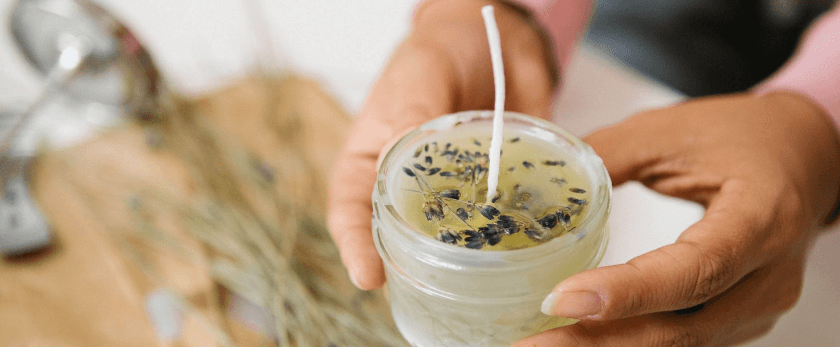Candles have been used for centuries to provide light, warmth, and ambiance. However, the traditional paraffin wax candles that we commonly use today are not only harmful to the environment but also to our health. The good news is that making your own candles is a simple and fun way to reduce your carbon footprint and create a healthier living space. In this article, we will discuss why traditional candles are bad for the environment, the benefits of making your own candles, and how to make them using eco-friendly materials.
Why Traditional Candles are Bad for the Environment
-
Paraffin wax is a byproduct of petroleum, a non-renewable resource that contributes to air pollution and climate change. The production of paraffin wax also involves the use of harmful chemicals, such as benzene and toluene, which are known to cause health issues.
-
The burning of paraffin wax candles releases toxic chemicals into the air, including benzene, toluene, and formaldehyde. These chemicals can irritate the respiratory system and aggravate allergies and asthma.
-
The wicks of traditional candles are often made of lead, which can release toxic fumes when burned. In addition, the packaging of these candles is usually made of plastic, which contributes to the growing problem of plastic pollution.
-
Traditional candles are usually scented with synthetic fragrances, which are made from petroleum-based chemicals. These fragrances can also release harmful chemicals into the air when burned.

Why Making Your Own Candles is Better for the Environment
-
By making your own candles, you have control over the ingredients used, ensuring that they are eco-friendly and non-toxic. You can use natural waxes, such as soy wax, beeswax, or coconut wax, which are renewable resources and do not release harmful chemicals when burned.
-
Making your own candles allows you to avoid using synthetic fragrances and instead use natural essential oils for scent. Essential oils not only provide a natural and pleasant aroma but also have therapeutic benefits.
-
By reusing containers and packaging materials, you can reduce waste and contribute to a circular economy. You can also get creative and use unconventional containers, such as mason jars, teacups, or tin cans, to add a unique touch to your candles.
-
Making your own candles is a great way to support local businesses and reduce your carbon footprint. You can purchase your materials from local suppliers, reducing the environmental impact of transportation.
What You Will Need
- Natural wax (soy wax, beeswax, or coconut wax)
- Wicks (cotton or hemp)
- Essential oils for scent
- Double boiler or a heat-safe container and a pot
- Thermometer
- Container for the candle
- Pencil or chopstick
- Scissors
- Optional: Wick stickers or glue dots, wick centering device, and a pouring pitcher
Directions
-
Prepare your container by cleaning it and ensuring it is dry. If using a container with a lid, make sure to poke a small hole in the lid for the wick to go through.
-
Measure the amount of wax needed for your container. A general rule of thumb is to use 1 ounce of wax for every 1 inch of diameter of your container. For example, if your container is 3 inches in diameter, you will need 3 ounces of wax.
-
Melt the wax in a double boiler or a heat-safe container placed in a pot of boiling water. Make sure to use a thermometer to monitor the temperature of the wax. The ideal temperature for soy wax is between 160-180°F, while beeswax and coconut wax should be heated to 170-180°F.
-
Once the wax has melted, remove it from the heat and let it cool for a few minutes. Add a few drops of your chosen essential oils and stir gently to incorporate.
-
While the wax is cooling, prepare your wick by cutting it to the desired length, leaving a few inches extra. If using a wick centering device, place it in the center of your container and secure the wick to the bottom using a wick sticker or glue dot. If not using a wick centering device, wrap the extra length of the wick around a pencil or chopstick and place it on top of the container.
-
Once the wax has cooled to the desired temperature (around 140°F), carefully pour it into your container. Make sure to pour slowly and avoid creating air bubbles.
-
Let the candle cool and solidify for at least 24 hours before trimming the wick to ¼ inch.
-
Enjoy your homemade, eco-friendly candle!
Responsible Disposal
When your candle has burned down, it is important to dispose of the remaining wax and container responsibly. Here are a few options:
- If using a container that can be reused, simply clean it and use it for your next candle-making project.
- If using a biodegradable container, such as a paper or cardboard container, you can compost it.
- If using a glass or metal container, you can recycle it.
- If using a plastic container, check with your local recycling program to see if it is accepted. If not, consider repurposing the container for storage or crafts.
Conclusion
Making your own candles is a simple and rewarding way to reduce your environmental impact and create a healthier living space. By using natural and non-toxic ingredients, reusing containers, and supporting local businesses, you can make a positive impact on the planet. So why not give it a try and light up your home with homemade, eco-friendly candles?










